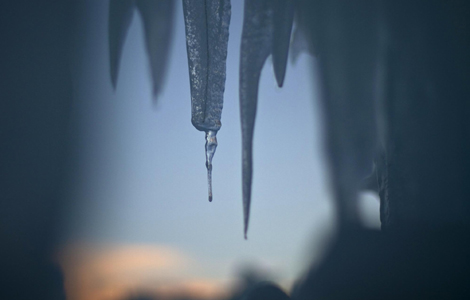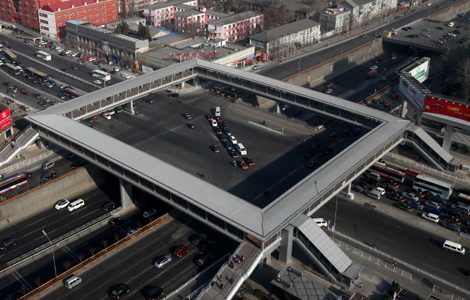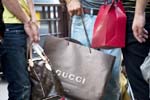China's auto market to remain gloomy in 2012
Updated: 2012-01-04 10:34
(chinadaily.com.cn/Xinhua)
|
|||||||||||
It has become increasingly clear to Chinese automakers that they can not always bet future success on a policy-driven market boom, and they should move to a more sustainable growth pattern.
China's auto sales rose just 2.56 percent year-on-year to 16.82 million units in the first 11 months of 2011, while that of domestic brands declined 2.34 percent to 5.52 million units, according to the China Association of Automobile Manufacturers (CAAM).
The January to November growth figure showed a dramatic drop from 30 percent in 2010 and 50 percent in 2009. With one month to go before a final tally can be made, auto sales are estimated to have risen 3 percent in 2011, which will mark the lowest level since 1999.
"The sharp decrease shows transformation pains that homegrown brands are experiencing," said Cheng Zhao, director of the Anhui Economic and Information Technology Commission's industrial policy department.
The industry's old growth mode can no longer adapt to changes in the market environment. Stranded domestic brands need to increase research input and accelerate industrial transformation by focusing on quality, technology and brands, Cheng said.
The dramatic sales drop was caused by the lifting of policy incentives for car purchases, and it was further worsened by the country's macro tightening measures, according to Xu Changming, head of the information source division of the State Information Center.
"Full-scale incentives are unlikely, so is the withdrawal of control measures such as car quotas adopted by some big cities to combat traffic woes. Next year's policy is going to be neutral," Xu said.
The government adopted a series of measures to buoy the economy during the global economic crisis, including cutting car purchase taxes for small-engine vehicles and issuing subsidies for car purchases in rural areas. But most of these incentives ended at the end of last year.
Meanwhile, Beijing launched a car quota system in January to ease traffic congestion. The limited options created by the quota somehow turned many Chinese consumers to foreign auto brands, hoping for better performance.
Furthermore, the government in September announced that it would raise the threshold for the 3,000-yuan ($476.12) subsidies to buyers of fuel-saving cars starting from October. The move was seen as part of the government's efforts to shift from simply stimulating consumption to restructuring the industry.
A guideline jointly issued by the National Development and Reform Commission on Dec 29 said that it will withdraw support for foreign capital in auto manufacturing, a sign that the government hopes to boost the sector's quality development rather than quantitative excellence.
Industrial insiders hold a cautious view toward market changes in 2012. The CAAM estimated that auto sales will grow from 5 percent to 10 percent in 2012, as the negative effects of policy withdrawal wane.
Rao Da, secretary-general of the National Passenger Car Information Exchange Association, said auto sales would maintain the year's scale in 2012. But he didn't rule out chances of negative growth.
Despite a fast-expanding market, homegrown brands have primarily relied on their relatively high cost effectiveness to woo consumers. The industry has long been blocked from making further breakthroughs due to backward technology, Cheng said.
"Because homegrown brands lag far behind other auto powers in core technologies such as engine, gearbox and chassis, it's hard for them to win consumer trust," Cheng said.
"The sector's rapid growth over the past few years has concealed many of its problems, which will emerge when the market encounters unfavorable impacts," said Zuo Yan'an, chairman of Jianghuai Automobile Co Ltd (JAC), an auto producer based in Hefei, capital city of central China's Anhui province.
"Chinese automakers need to reflect on the problems the industry has accumulated over the past few years," Zuo said.
However, as auto sales chilled, many domestic brands started using the "hibernation" to build inner strength.
According to Zuo, the private car manufacturer JAC set up a quality guarantee alliance this year to boost quality, and 300 core component suppliers and more than 400 channel partners participated in the alliance.
Jin Gebo, spokesman of China's private automaker Chery Automobile Co, said the ratio of the company's flagship models has risen from 46 percent in 2009 to over 55 percent in 2011 as a result of its efforts to optimize its product portfolio.
"As consumers raise higher requirements for auto quality and brands, the industry must mull making deep changes in its development mode. We must shift our focus from quantity and scale to quality and efficiency," Jin said.









